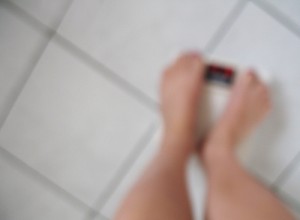 When we were in Europe, we left our car parked at my parents’ house for two weeks. My dad was kind enough to get a nick in our windshield fixed for us. When he was driving the car, he noticed that the steering wheel was shaking at 65-70 mph. We’d noticed this, too, but between the hectic move and rushing around before our big trip, we’d put off doing anything about it.
When we were in Europe, we left our car parked at my parents’ house for two weeks. My dad was kind enough to get a nick in our windshield fixed for us. When he was driving the car, he noticed that the steering wheel was shaking at 65-70 mph. We’d noticed this, too, but between the hectic move and rushing around before our big trip, we’d put off doing anything about it.
When we came home, my dad warned me that he suspected the front alignment was off. He recommended that we get it checked out. My dad worked as a mechanic for several years when he was younger, so he knows his stuff. I made a mental note to take care of it.
Fast forward four months. It’s been a very busy four months. Between the baby and the move and everything in between, we put off taking the car in.
We’ve also done a lot of driving in the past four months. With the move and visits to family and friends all over the state, we put several thousand miles on the car since May. We’ve had the oil changed since then, but I admit we’ve neglected to check our tires regularly.
This weekend we drove about 3 hours south to visit Tony’s family. On Sunday when we were getting ready to leave, my father-in-law noticed that the front passenger tire looked funny. Upon closer inspection, he realized that it wasn’t just worn: the front tire was pretty much completely bald. (!!) It was purchased at the same time as the front driver’s side tire, which was nowhere near as worn. This confirmed what my dad had told me four months ago: we had a serious alignment problem.
Since it was Sunday evening, we were three hours from home, and Tony needed to be back this morning for work, we didn’t have a lot of options. We have a tiny temporary spare, but it shouldn’t be used for more than 50 miles. We were over 100 miles from home. So Tony and his dad swapped the bald tire with one of the rear tires. Our car is front-wheel-drive, so we figured it was safer to put the bad tire in the back.
We made the trip home very carefully, driving under 55 mph the whole way to avoid blowing the tire. Thankfully, we made it safely.
Today I took the car to the shop. The alignment only cost $40 — less than half the cost of replacing the bald tire, which was $90. It took 15 minutes. I am kicking myself for putting off such a simple thing. If I’d listened to my dad and taken the car in to get the alignment fixed four months ago, we wouldn’t have had to replace that tire so soon, and it would have saved us almost $100. Doh.
We were also very lucky. In the past month, I’ve taken several trips out of town by myself for a friend’s wedding and a funeral just last week. That tire was dangerously close to blowing completely, and if it had happened when I was by myself two hours from home, I have no idea what I would have done.
There are few morals here:
- Have your alignment checked as part of standard maintenance. We had the oil changed Saturday before we left. Not only did they not notice the bald tire (which honestly surprises me), but they didn’t check the alignment. It’s a simple thing to do every few thousand miles, and it can really help lengthen the life of your tires. But it’s not part of a standard oil change, so you have to ask them to do it.
- Check your tires frequently! I am embarrassed that we got on the road for a three-hour trip without at least glancing at the condition of our tires. To be fair, we did get the oil changed that day, and we were told the tires were fine. But they only checked the tire pressure, not the tread. Not only should you check the tire pressure and look for standard wear, but also check for leaks, bubbles, nails, and anything else that could compromise the safety of your tires.
- Listen to your dad. He probably knows what he’s talking about.






